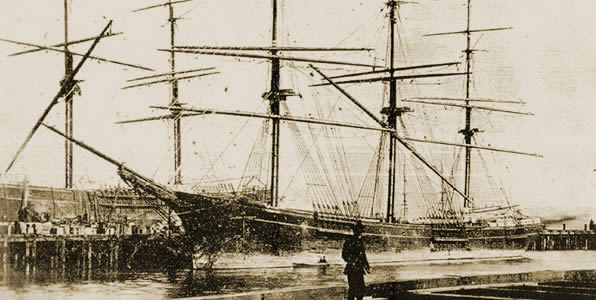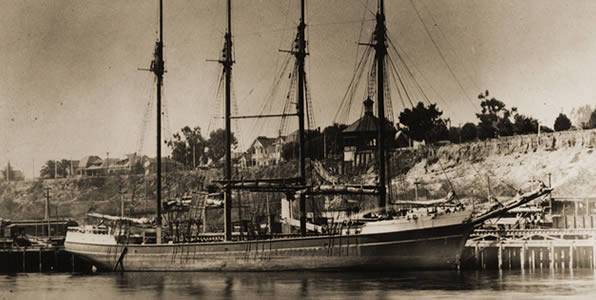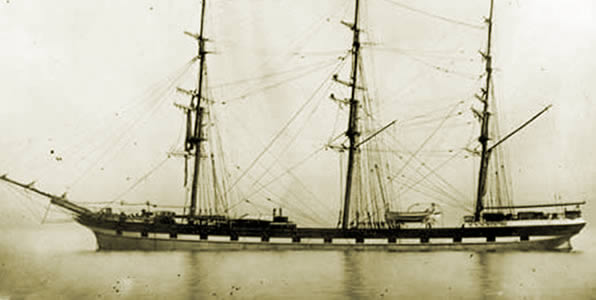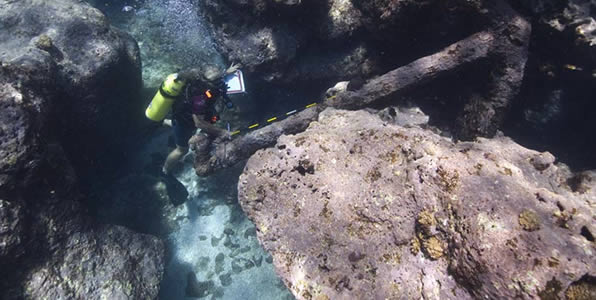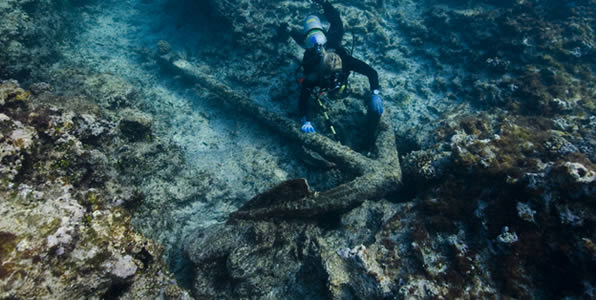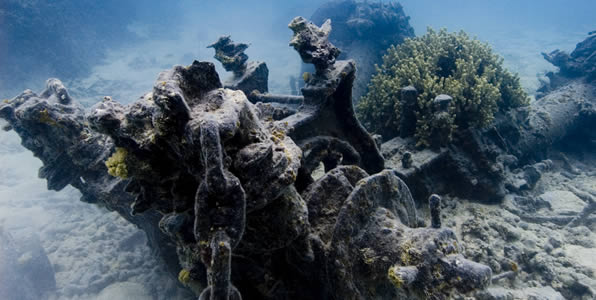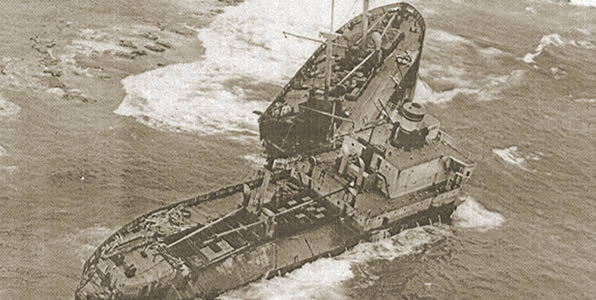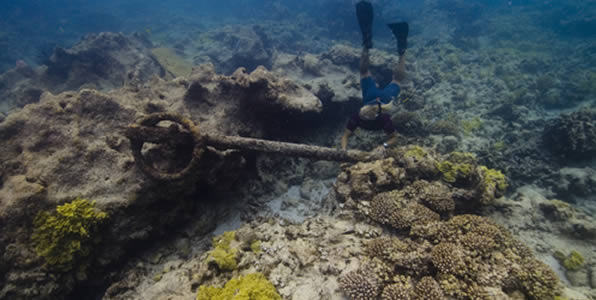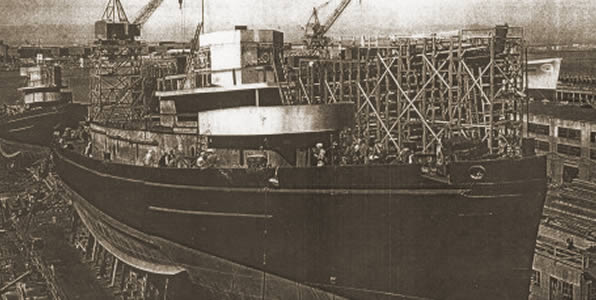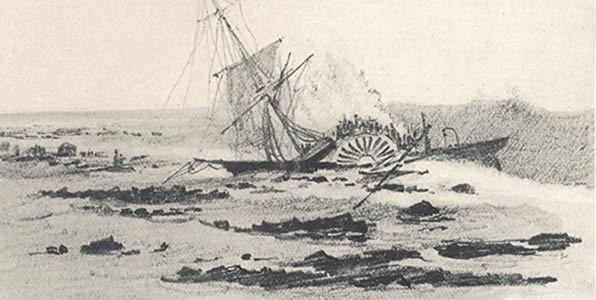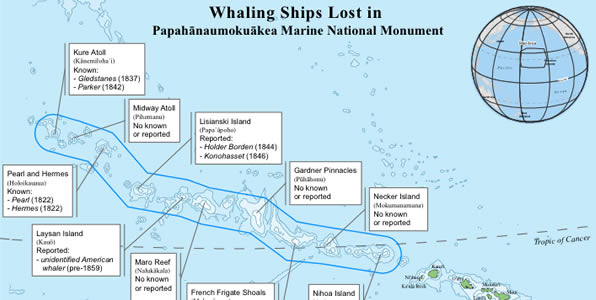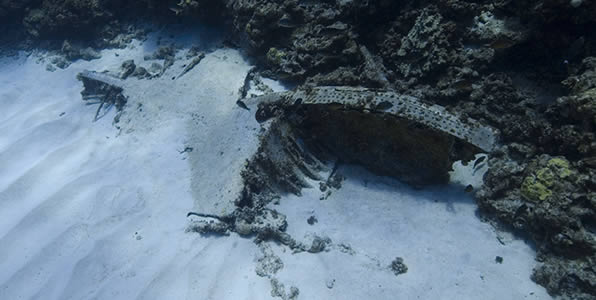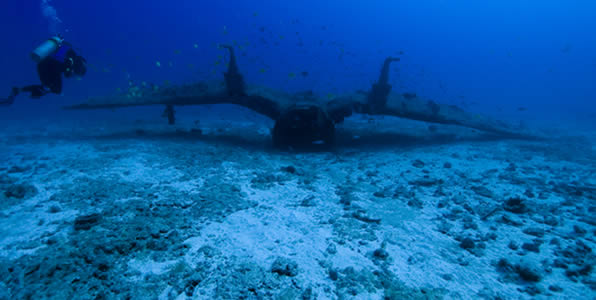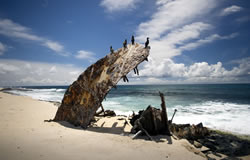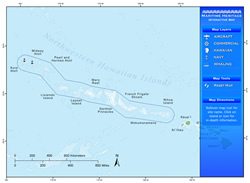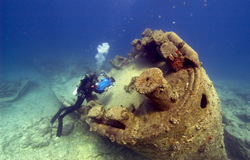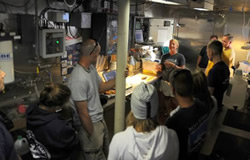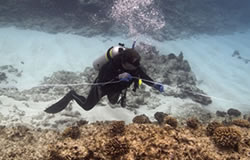
Maritime Heritage in Papahānaumokuākea Marine National Monument
Though humans have been engaged in hundreds of years of exploration and discovery, there is still much to learn and discover beneath the waves of Papahānaumokuākea. Beginning with Polynesian sailing canoes and continuing to modern day submersibles and research vessels, exploration is an important part of the maritime heritage of the Northwestern Hawaiian Islands.
Maritime archaeologists use stories passed down through generations, written records, and the discovery of shipwreck sites to get a glimpse at what life at sea and the ocean environment was like for our ancestors. The many layers of heritage in Papahānaumokuākea have left a material legacy on the seafloor and a wealth of history to interpret. We see the material remains of American and British whaling ships, Japanese junks, navy steamers, Hawaiian fishing sampans, Pacific colliers, salvage vessels, and navy aircraft. However, these sites are merely the physical record of past activities in PMNM that represent broader cultural landscapes that weave the history of these islands together and connect the human history of this unique place.
Interpretation of these shipwreck sites and the broader maritime heritage stories of Papahānaumokuākea helps us to understand the importance of remaining connected to this place and why it is vital to protect its natural and cultural resources for years to come. Through a better understanding of our past, we can help inform future generations about stewardship and resource protection.
I ulu no ka lālā i ke kumu
"The branches grow because of the trunk."
Without our ancestors, we would not be here.
ʻŌlelo Noʻeau 1261
The unique islands and atolls of the NWHI, due to their isolation, are reserves for ecosystem diversity, and the intelligent management of their natural resources is of critical concern. The NWHI also possess a rich maritime history and special non-renewable resources…submerged maritime heritage resources, such as shipwrecks, sunken aircraft, and other archaeological sites. Such historic sites are like windows into the past. There may be as many as 60 vessels known lost among the atolls and at least 67 naval aircraft sunk in the Northwestern Hawaiian Islands, but who knows how many more have yet to be discovered.
Shipwrecks in the NWHI have been a well-known phenonmenon for many years. In 1915 the Reverend J.M. Lydgate, in his opening remarks to "Wrecks to the North-west," summarized the hazardous nature of the atoll environment:
The islands and reefs to the northwest of Hawaii have been a veritable graveyard of marine disaster. The two sufficient reasons for this have been, first, the low, inconspicuous character of the islands, and, second, the faulty or insufficient location of them on the marine charts. The menace of the iceberg is the fact that it lies seven-eighths underwater and you strike some submerged, protruding spur of it before you dream of danger. In a much more disastrous way the same thing is true of many of these islands.
--Reverend J.M. Lydgate, 1915
Maritime heritage is a broad legacy that includes not only physical resources, such as historic shipwrecks and prehistoric archaeological sites, but also archival documents, oral histories, and traditional seafaring and ecological knowledge of indigenous cultures. The vision of the Maritime Heritage Program is that a broad spectrum of Americans will be engaged in the stewardship and appreciation of our national maritime heritage.
As with natural resources, numerous user and interest groups, from archaeologists to recreational divers, seek to interact with maritime heritage resources in many different ways (exploration, photography, excavation, etc.). These resources also are impacted by natural factors such as storms, currents and corrosion. Therefore, responsible, informed decisions must be made on how to manage these resources for the enjoyment and appreciation of current and future generations. Maritime heritage resources, unlike living resources, are nonrenewable, so it is especially important that we protect these important links to our past. When properly studied and interpreted, maritime heritage resources add an important dimension to our understanding and appreciation of our nation's rich maritime legacy, and make us more aware of the critical need for us to be wise stewards of our ocean planet.
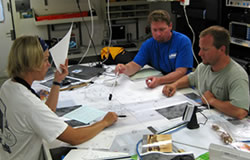
Cathy Green, Tane Casserley and Jason Raupp work on a site plan in the Hiʻialakai’s drylab.
Credit: NOAA/Gleason.
The maritime heritage of Papahānaumokuākea Marine National Monument extends far beyond the sunken shipwrecks and scattered artifacts on the seafloor of the Northwestern Hawaiian Islands. These submerged sites and scattered artifacts are reminders of the many brave sailors and skilled navigators who ventured throughout the Pacific. Their stories also enlighten us to a different time in our history, when these atolls were not part of one of the largest marine protected areas in the world. Today, we seek to understand and preserve the resources in the Northwestern Hawaiian Islands. Many years ago, numerous sailors traveling through these atolls hoped to profit from its rich resources by hunting, fishing, and extracting the valuable mammals, fish and birds that thrive in these islands. Over time, we have learned to change our behavior from an interest in exploitation to a common goal of protection of these resources. Interpretation of these shipwreck sites and the broader maritime heritage of Papahānaumokuākea Monument help us to understand the way that we are connected to this place, and must play a part in helping to protect its natural and cultural resources for years to come. Survey of these resources began in 2002, when maritime archaeologists first began to interpret these sites. Annual research expeditions continue to uncover sunken mysteries and seafaring tales in the Northwestern Hawaiian Islands to share with the public.
Maritime Heritage Research, Education, and Management Plan
Click here to view and download (pdf, 11.9 MB)

